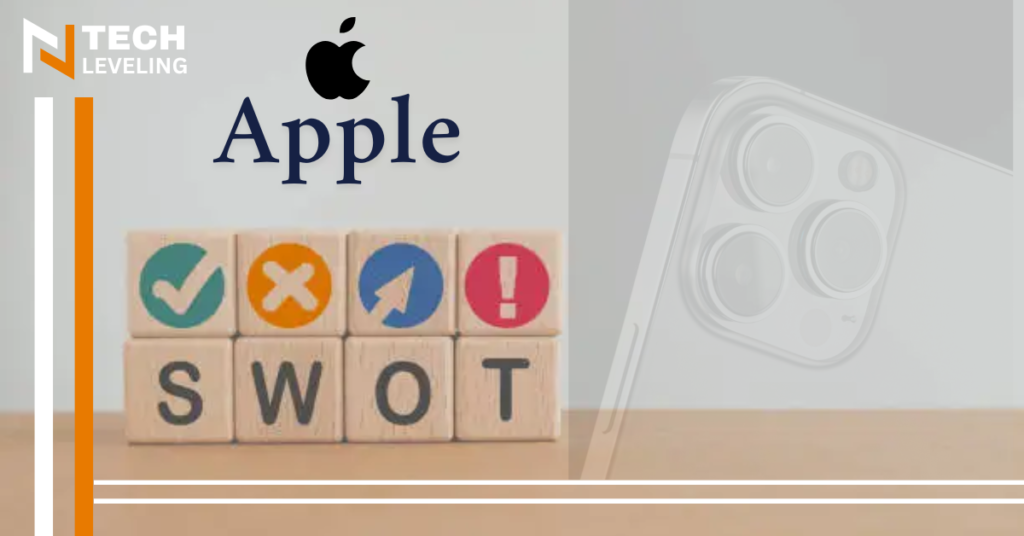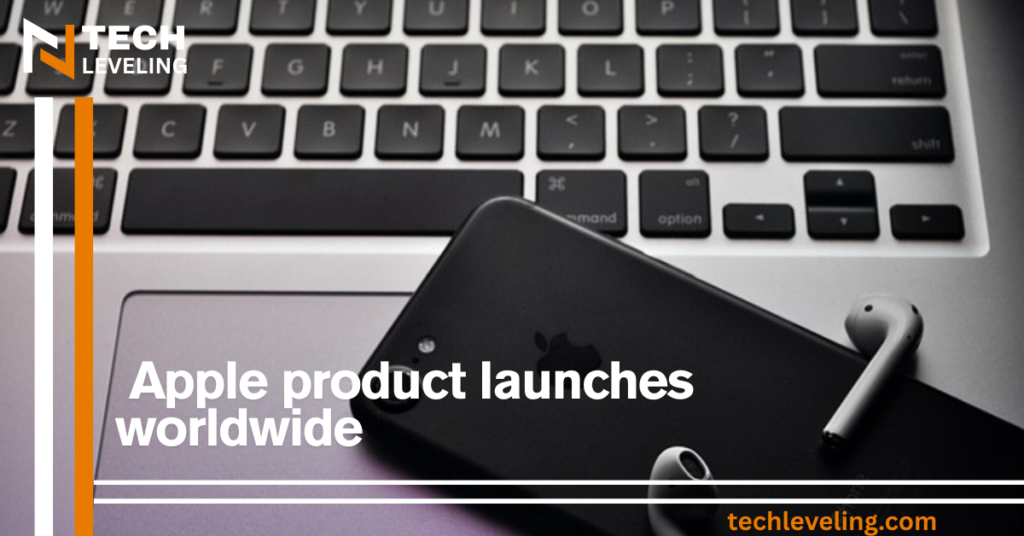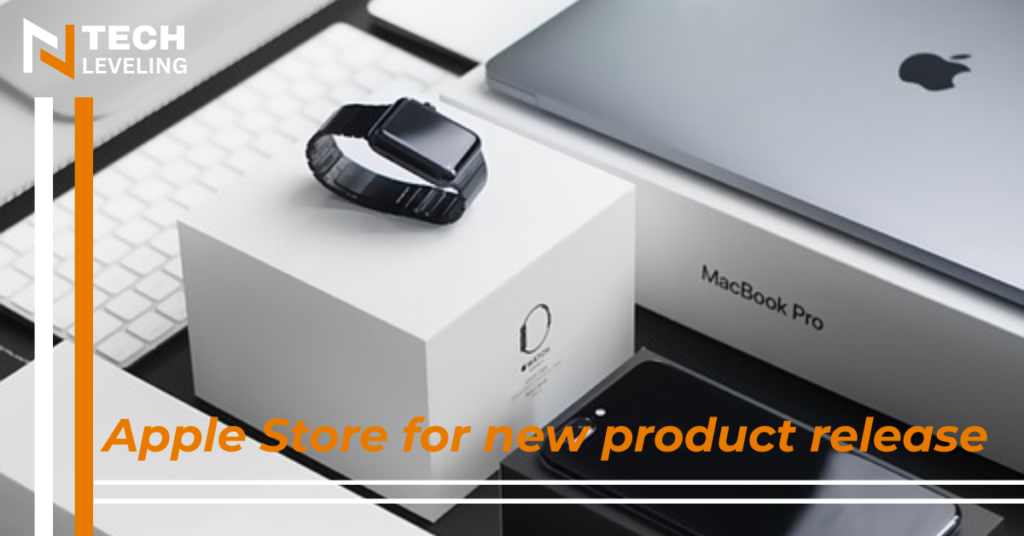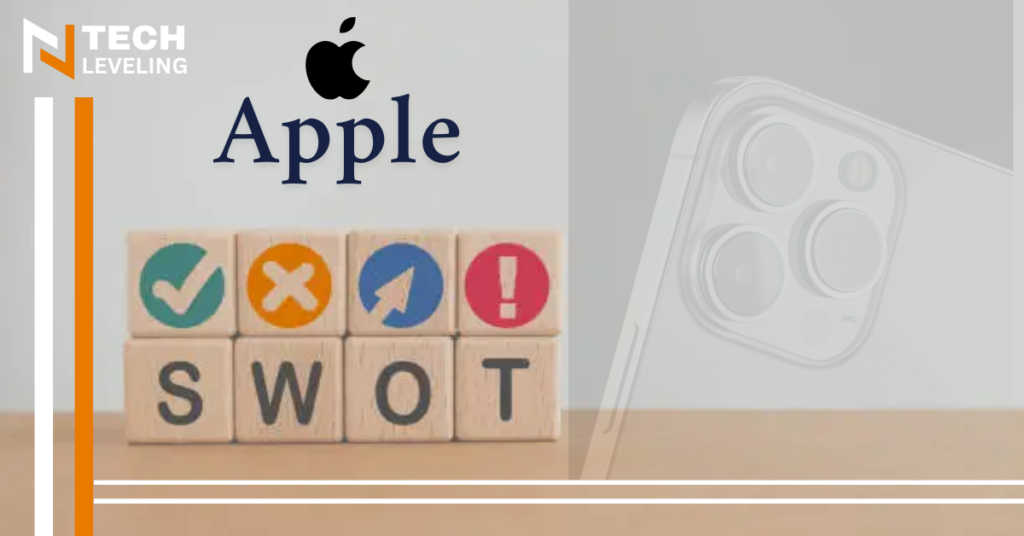Apple SWOT Analysis 2025: Key Strengths, Weaknesses & Future Challenges

Let’s be honest—we all know Apple makes shiny gadgets that people line up for. But behind those sleek product launches and eye-watering profits, there’s a real company facing real challenges. As someone who’s followed tech for years, I want to walk you through what’s really going on with Apple—the good, the bad, and the uncertain—in a way that actually makes sense.
Why We Can’t Quit Apple (Even When We Want To)

You know that feeling when you consider switching to Android but then remember all your stuff is in iCloud? That’s not an accident. Apple has built what might be the stickiest ecosystem in tech history.
- Over 1.4 billion active devices means there’s always someone new buying into the Apple universe
- Their 92% retention rate is the tech equivalent of a hotel with “No Vacancy” signs permanently lit
- Services like Apple Pay and Apple Music have quietly become $85 billion per year businesses
But here’s what’s fascinating—while we joke about being trapped in the “walled garden,” most of us don’t actually mind. The seamless handoff between iPhone, Mac, and iPad? That’s not just marketing—it’s why your non-techy aunt can actually use her devices without calling you for help every weekend.
Table of Contents
The Flip Side: Apple’s Growing Pains
Now, let’s talk about the elephant in the room—that moment when you see the iPhone price tag and gulp. Apple’s “premium or nothing” approach is starting to show cracks:
- In India, where the average salary is about $2,000/year, even the “cheap” iPhone SE costs a month’s wages
- While we’re dazzled by $3,500 Vision Pro headsets, competitors are eating Apple’s lunch in places where people care more about price than polish
- Remember when Apple events used to surprise us? Lately, it feels like we’re getting slightly better cameras wrapped in “courageous” marketing
And here’s something that keeps Tim Cook up at night—more than half of Apple’s money still comes from iPhones. It’s like a restaurant that became famous for its burger but can’t get people to order anything else, no matter how fancy the menu gets.
The Big Bets: Where Apple Goes Next

Apple Lume (Rumored Product)
Apple Lume is speculated to be a new health-focused wearable, potentially combining advanced biometric sensors with sleek design. Leaks suggest it may track stress levels, blood glucose, and sleep patterns more accurately than current devices. Expected to integrate deeply with the Apple Health ecosystem, positioning itself as a premium alternative to Fitbit and Garmin. Possible launch window: Late 2024 or early 2025.
Apple Lumon (Potential Display Technology)
Rumored to be Apple’s next-gen microLED display technology, offering brighter colors and lower power consumption than OLED. Likely destined for future iPhones and Apple Watches to improve battery life and outdoor visibility. Industry insiders suggest production challenges may delay mass adoption until 2026. Could revolutionize Apple’s display supply chain by reducing reliance on Samsung.
Apple MacBook Air M4 (Upcoming Refresh)
The M4 MacBook Air is expected to debut in late 2024 with a 3nm chip for 20% faster performance than the M3. Anticipated to retain the slim design but add Wi-Fi 6E and improved thermal management. Potential new color options (possibly rose gold) to differentiate from Pro models. Battery life may reach 22 hours thanks to efficiency gains.
Next Apple Event (iPhone Focus)
Apple’s next major event will likely be in September 2024, traditionally unveiling new iPhones (possibly the iPhone 16 series). Some speculate a June WWDC preview of iOS 18’s AI features could steal the spotlight. Watch for invitations featuring augmented reality teasers, as Apple increasingly blends digital and physical marketing. Expect heavy emphasis on generative AI integration across devices.
iPhone 17 Lineup (Early Predictions)
The iPhone 17 series (2025) may introduce an all-screen design with under-display Face ID, per analyst Ming-Chi Kuo. Pro models could get a periscope zoom upgrade to 6x optical magnification. Base models might finally adopt ProMotion 120Hz displays to stay competitive. A potential “iPhone 17 Slim” could replace the Plus model with a titanium frame.
When will be WWDC in Apple?
WWDC (Apple’s Worldwide Developers Conference) is an annual June event showcasing new software (iOS, macOS) and occasionally hardware. 2024’s focus will be AI/ML tools for developers and possibly “Apple GPT” integrations. Students can apply for scholarships to attend free. Keynotes often reveal features coming to devices 3-6 months later.
New Apple Products Coming in 2025
2025 may see an AR glasses prototype (codenamed “Apple Glass”), M5-powered Macs, and a foldable iPad. The Apple Watch could get a blood pressure monitor, while AirPods might adopt lossless audio via Wi-Fi. HomePod with a built-in screen is another rumored addition. Supply chain reports hint at a major iPad Pro redesign with landscape FaceTime camera.
8. Apple Scholars Program in AI/ML Review
This prestigious program awards $15K+ scholarships to grad students working on AI/ML research applicable to Apple products. Selected scholars get mentorship from Apple engineers and internship priority. 2024’s focus areas include on-device LLMs and health sensor algorithms. Applications typically open in January via Apple’s academic partnerships portal.
iPad Air Release Date with M3 Chip
The next iPad Air (expected October 2024) will likely debut with the M3 chip and a new 12.9-inch size option alongside the existing 10.9-inch model. Upgrades may include a landscape front camera for video calls and anti-reflective screen coating. No OLED yet—that’s reserved for the Pro line. Educational discounts typically knock 50−50−100 off at launch.
Apple Stock Predictions for 2025
Analysts project AAPL could hit $250/share by 2025 if AI services gain traction and Vision Pro finds enterprise use cases. Key factors: iPhone upgrade cycles, gross margins on services, and China market stability. Morgan Stanley warns of volatility if antitrust cases progress. Dividend growth may slow as Apple prioritizes R&D spending over shareholder returns.
Bonus: Student Discounts on Apple Products
Apple offers year-round education pricing (typically 10% off Macs/iPads) with free AirPods during back-to-school promos (July-October). UniDays verification unlocks extra deals on accessories. Best value? Refurbished M1 MacBook Airs start at $749 with full warranty. Always compare with Amazon/BB student deals—sometimes better than Apple’s official pricing.
Walking through Apple Park (yes, the spaceship campus), you can practically smell the money being poured into two things:
- AI That Doesn’t Embarrass Them
- Siri has become tech’s equivalent of that one uncle who still thinks his jokes are funny
- Rumor has it iOS 18 will be Apple’s “hold my beer” moment for AI—we’ll see
- The Vision Pro Gamble
- Early adopters love it; everyone else wonders who actually wears a $3,500 computer on their face
- This could be the next iPhone… or the next Newton (Google it, kids)
What’s interesting is watching Apple try to thread the needle—keeping its premium vibe while quietly making moves in places like India, where they’ve built factories and started offering financing.
Real Talk: What Could Go Wrong?

Let’s have an honest conversation about Apple’s headaches:
- China Risk: Imagine your entire production line depending on a country that’s having trade wars with yours
- Regulators: The EU just forced Apple to allow alternative app stores—like making a mall owner allow rival food courts
- Innovation Pressure: Remember when Apple keynotes made Samsung executives cry? Now the leaks barely get a shrug
People Asking About
“Why does my new iPhone feel like my old iPhone?
Because Apple’s playing it safe. While Android brands throw spaghetti at the wall (folding phones!),! 200MP cameras!), Apple’s betting we care more about things just working than being wowed.
“Should I buy Apple stock?”
Here’s the thing—Apple prints money, but growth is slowing. It’s like owning beachfront property that’s not getting any bigger. The services business (App Store, subscriptions) is becoming the new growth engine.
“Is Apple falling behind in AI?”
Short answer: Yes, for now. Long answer: Apple tends to enter markets late but polished. Remember when everyone laughed at the iPod and iPhone?
The Bottom Line
Apple in 2025 feels like a superstar athlete entering their late career—still dominant, but working harder to stay on top. The magic ecosystem keeps printing money, but
- The next big thing isn’t obvious anymore
- The world is getting more expensive and more competitive
- Regulators are circling like seagulls at a beach picnic
What makes Apple fascinating now isn’t just the products—it’s watching one of the most successful companies in history navigate middle age. Will it reinvent itself again? Or slowly become tech’s most luxurious relic? Grab your popcorn (or your Vision Pro)—this is going to be interesting to watch.
Conclusion

Next time you’re frustrated by Apple’s prices or limitations, remember—you’re not just buying a phone. You’re buying into the most successful consumer ecosystem ever built. Whether that’s worth it? Well, that’s between you and your wallet. Apple enters 2025 from a position of remarkable strength, with unparalleled brand loyalty, a thriving ecosystem, and exceptional financial resources. These advantages provide a sturdy foundation for navigating the challenges and opportunities ahead. However, the company faces significant tests in areas like artificial intelligence, emerging market expansion, and regulatory compliance. The coming years will reveal whether Apple can successfully transition from being an iPhone company to a broader technology leader. Its investments in services, wearables, and spatial computing suggest a recognition of this need, but execution will be critical. How Apple addresses its AI gap, manages its supply chain risks, and responds to regulatory pressures will largely determine whether it can maintain its premium positioning and industry leadership.
For investors, the key question is whether Apple can continue growing at its historical rates as the smartphone market matures. For competitors, understanding Apple’s strengths and weaknesses provides clues about where they might find opportunities. And for consumers, Apple’s strategic direction will shape the next generation of personal technology products and services. One thing remains certain: in the fast-moving technology sector, even the most successful companies must continually evolve to stay ahead.

